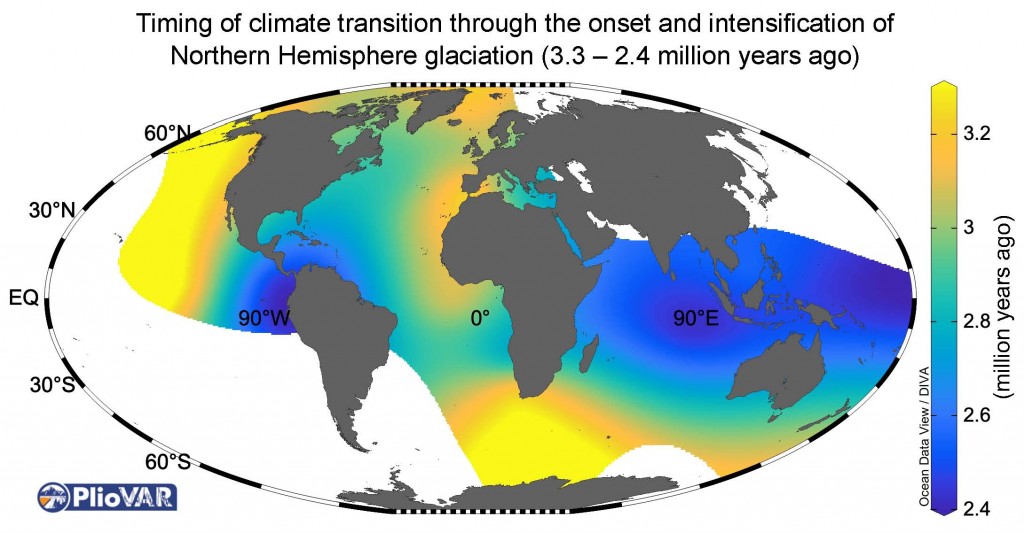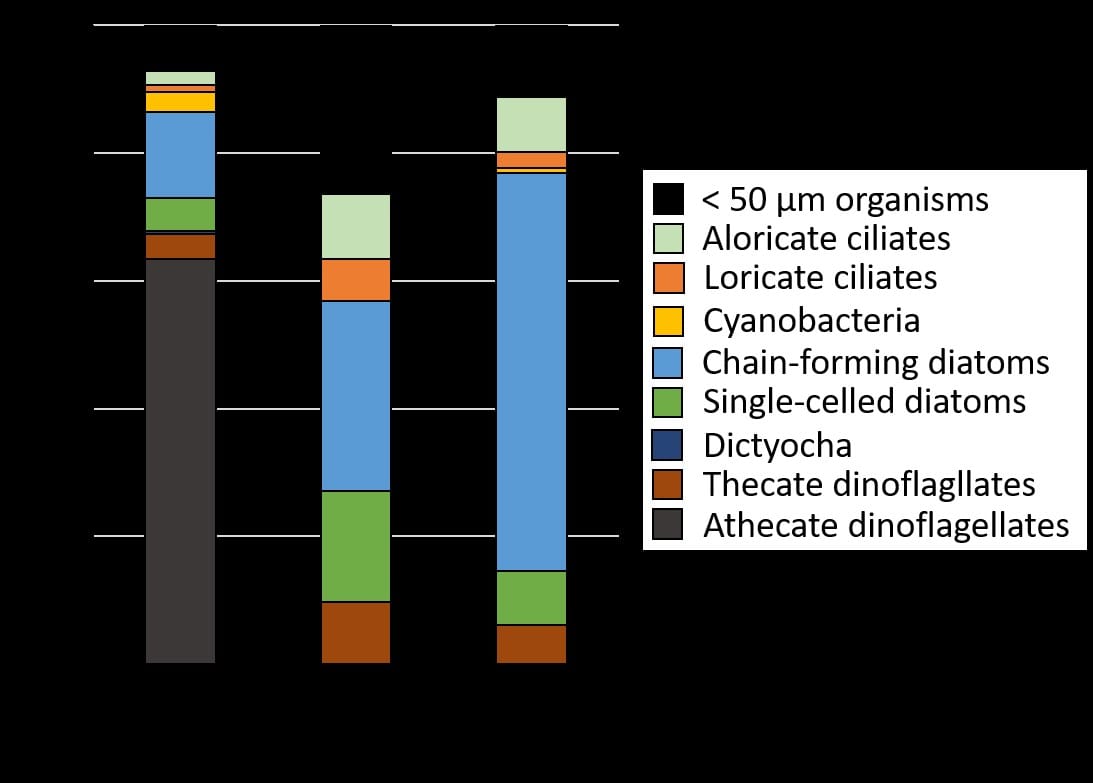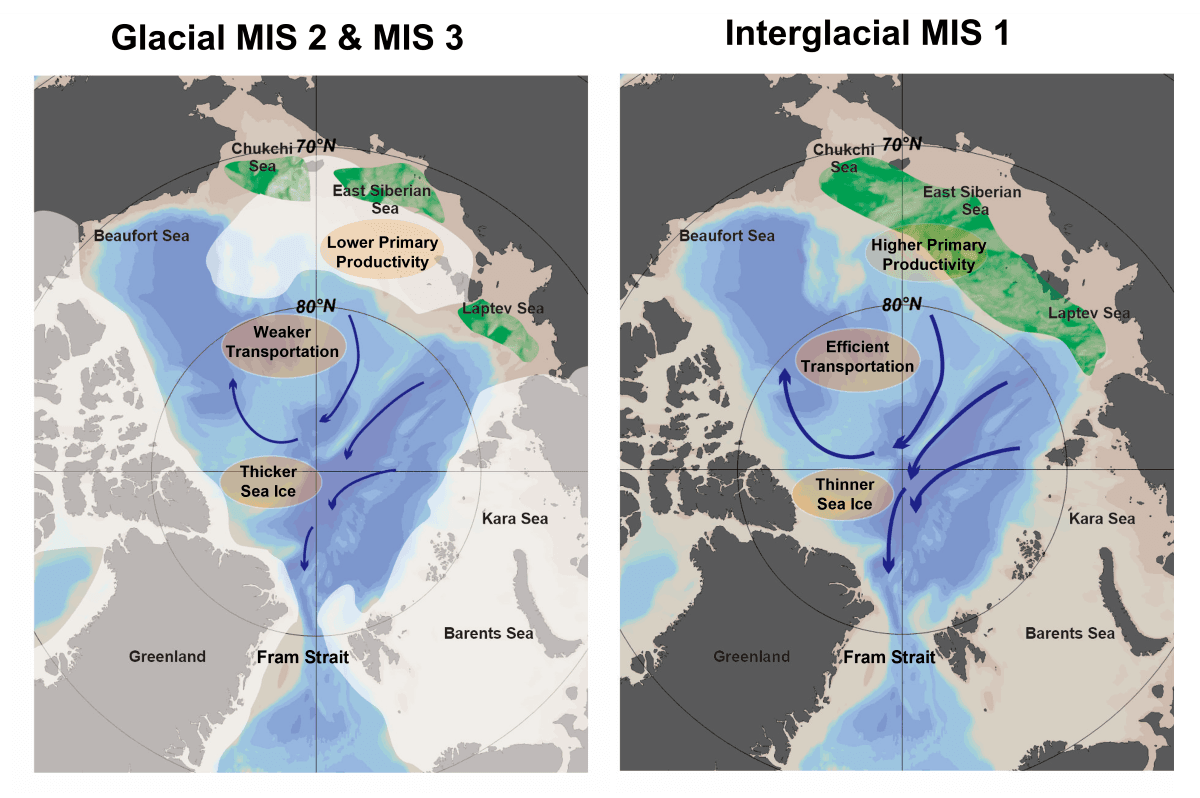The surface of the Earth has been getting warmer over the last few decades due to the increasing atmospheric CO2 concentration as a result of human activities. This is accompanied by the loss of glaciers and ice sheets in polar regions, resulting in sea level rise. Just last month, the Earth experienced the highest air and sea surface temperatures with the lowest global sea ice extent since 1980s! Given the state of our climate, there is an urgency to understand how climate on Earth responds to changes in atmospheric CO2 concentration.
One option is to learn from the history of Earth’s climate, especially back to a time when the atmospheric CO2 forcing was similar to that projected for the near future. One such period is the late Pliocene (3.3-3.1 million years ago). Due to its relevance for future climate change, this geological period is also featured in the latest IPCC report. Scientists have used geological data from this period to validate the performance of climate models used to project future climate change. These valuable geological data are generated using marine sediment cores that are tens to hundreds of meters in length, retrieved from the seabed by drilling research vessel. The retrieval of sample material and the subsequent analysis in laboratories are extremely time and resource-consuming. Thus, to date most studies focus on a single sediment core or approach. However, a point in space does not allow us to understand how climate change globally.
To overcome this limitation, Assistant Professor Sze Ling Ho (Institute of Oceanography, National Taiwan University) and Professor Erin McClymont (Durham University, UK) have been co-leading an international working group called PlioVAR in the past few years. Together, they coordinated effort involving many experts from numerous institutions in Europe, America, Asia and Oceania to collate and analyze globally distributed published paleoclimate records spanning 3.3 to 2.4 million years ago. These data were generated using various geochemical approaches.
During the time interval of interest, the Earth underwent a large global shift from a stable warm period called the Pliocene to a climatically unstable period called the Pleistocene marked by the waxing and waning of ice sheets. This transition was accompanied by a steady decrease in atmospheric CO2 concentration. With the global compilation generated by the team, it has become clear that this climate transition was not a globally synchronous event as previously thought. It began earlier in some regions, even before the ice sheets expanded. The warm late Pliocene, often assumed to be a stable period, was a time of climate transition, especially in the southern hemisphere. As the ice sheets grew in the northern hemisphere, ocean temperature and circulation were impacted, but not everywhere. In addition, the team also observed an increase in the mean and the range of climate variability across this transition, but once again, these changes vary in space. This study highlights the complexity and regionally heterogenous nature of climate change across a globally-significant climate transition as well as in response to the current atmospheric CO2 concentrations.
The study was published in an invitation-only, high-impact American Geoscience Union journal Reviews of Geophysics.
Further reading:
McClymont, Ho et al. (2023) Climate evolution through the onset and intensification of Northern Hemisphere Glaciation, Reviews of Geophysics, 61, e2022RG000793. https://doi.org/10.1029/2022RG000793








